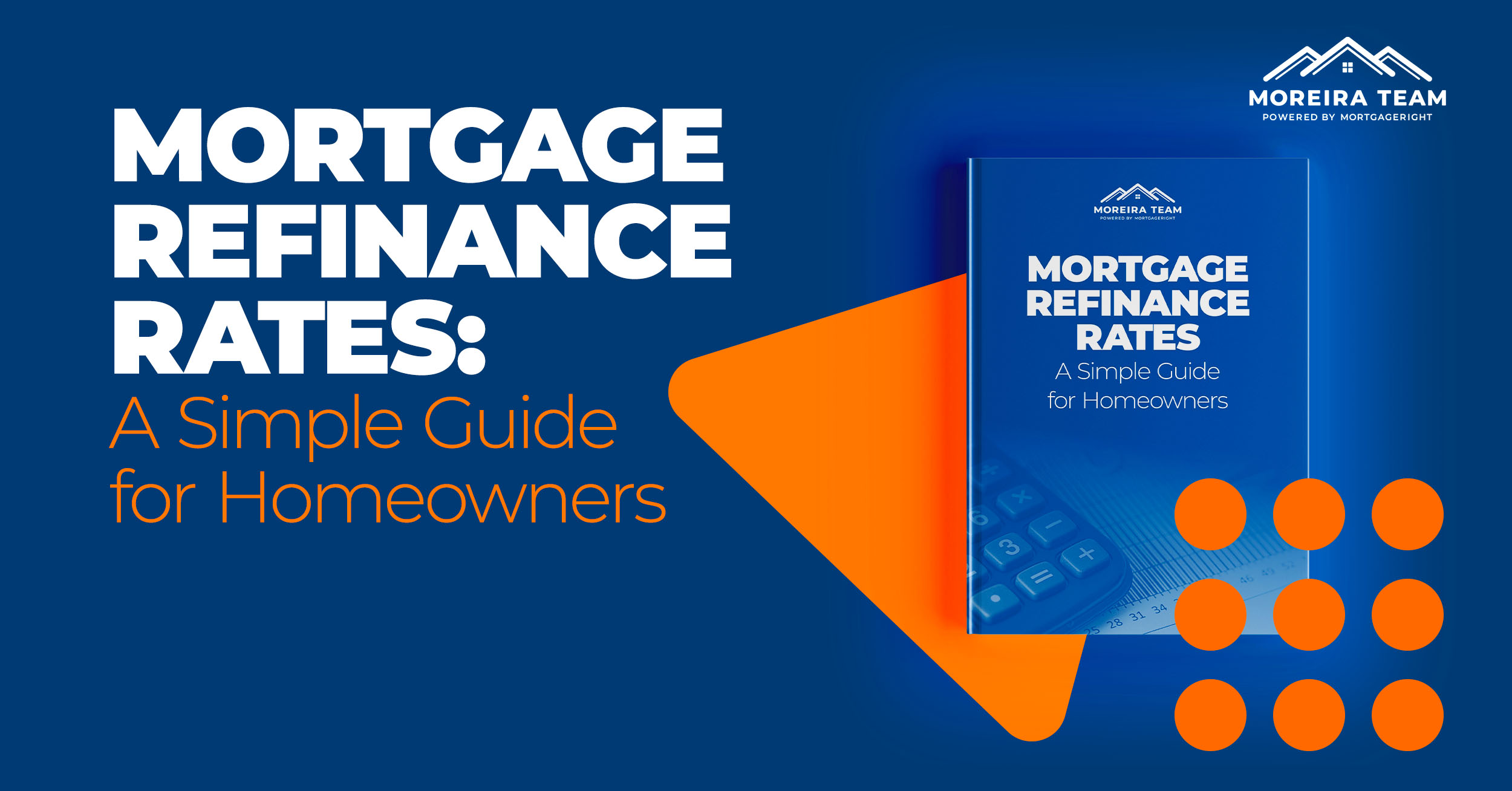
In this article
- What is Refinancing, and Why Should You Care?
- Why Do Homeowners Refinance?
- How Do You Know if Refinancing is Right for You?
- Refinancing in Five Simple Steps
- 1. Review Your Current Loan
- 2. Use a Mortgage Calculator
- 3. Compare Lenders and Mortgage Refinance Rates
- 4. Apply for Your Refinance Loan
- 5. Close on Your New Loan
- Common Questions About Refinancing
- See If Refinancing Makes Sense for You
What is Refinancing, and Why Should You Care?
Refinancing means replacing your current mortgage with a new one with better terms, capitalizing on mortgage refinance rates. It’s a great option to lower your monthly payment, lock in a lower interest rate, or even take cash out of your home’s equity.
Many homeowners refinance to save money over time or to free up cash for critical financial goals, and they find the cost to refinance mortgage payments is not as much as they thought. Refinancing is the perfect solution if you’re looking to pay off debt, renovate your home, or make life a little easier. Restructuring your home loan means your mortgage payments will align better with your long-term financial plan and create a more stable financial future.
Why Do Homeowners Refinance?
- Lower Your Interest Rate: If rates have dropped since you bought your home, refinancing could help you secure a better rate. A lower rate means a lower monthly payment, which keeps more money in your pocket. Over the years, even a small decrease can result in major savings, allowing you to allocate funds toward other essential expenses or investments.
- Reduce Your Monthly Payment: Mortgage refinance rates can stretch your loan over a more extended period, making your payments more manageable. If you’re feeling stretched financially, this can provide welcome relief.
- Tap Into Your Home’s Equity (Cash-Out Refinance): If you’ve built equity in your home, you can borrow against it. Many homeowners use this to pay off high-interest debt, fund home improvements, or cover major expenses. Your home’s equity is a financial tool that can provide much-needed liquidity to deal with high-risk debt like credit cards or personal loans.
- Switch from an Adjustable-Rate Mortgage (ARM) to a Fixed-Rate Loan: If your current loan has an interest rate that can change over time, switching to a fixed-rate mortgage can give you predictable payments. Stability can be a game-changer, especially in uncertain economic times.
- Pay Off Your Loan Faster: Some homeowners refinance to shorten their loan term, such as moving from a 30-year to a 15-year mortgage. You’ll repay your home sooner and save thousands in interest over time. Homeownership becomes more cost-effective and potentially allows for earlier retirement if you refinance and pay it off sooner. You also reduce the amount of interest paid.
How Do You Know if Refinancing is Right for You?
Refinancing is smart in certain situations, but it’s not for everyone. Here’s how to decide if it’s worth it.
- Are interest rates lower now than when you bought your home? Lower rates usually mean lower monthly payments. If rates have dropped, you could save thousands over the life of your loan.
- Do you have high-interest debt you’d like to consolidate? A cash-out refinance lets you use your home’s equity to pay off credit cards or other loans. This can make the debt more manageable with one predictable monthly payment.
- Has your credit score improved since you bought your home? If your financial situation improves, you may qualify for a better loan with more favorable terms. A higher credit score often means better interest rates. Lenders reward borrowers with strong credit histories by offering lower rates, which can significantly reduce your monthly payments and the total interest paid over time.
- Are you planning to stay in your home for several more years? Refinancing comes with closing costs, so you’ll want to keep your home long enough to break even on the savings. If you’re moving soon, refinancing might not be the best option. Consider how long you plan to stay in your home and compare the upfront costs of refinancing with the potential long-term savings to determine if it’s the right financial move.
- Do you want to change your loan type? You started with an adjustable-rate mortgage, but now you want the security of a fixed-rate loan. Refinancing allows you to switch to a loan that fits your long-term needs. Fixed-rate loans provide stability, ensuring your monthly payments remain consistent, protecting you from market fluctuations, and making it easier to plan for the future.
If you answered “yes” to these questions, it may be time to explore your refinancing options. Use our Mortgage Calculator to research mortgage refinance rates and how they could change your monthly payment.
Refinancing in Five Simple Steps
If refinancing sounds like a good option, here’s what you must do. It’s easier than you think, and we’re here to help you every step of the way.
1. Review Your Current Loan
Start by looking at your mortgage statement. Pay attention to your current interest rate, loan balance, and monthly payment. Knowing where you stand will help you decide if refinancing is worth it.
2. Use a Mortgage Calculator
Before contacting lenders, get a rough idea of your potential savings. Try our Mortgage Calculator to compare your current loan with a new one. This will give you a quick estimate of how much you could save.
3. Compare Lenders and Mortgage Refinance Rates
Not all lenders offer the same rates or fees. Shopping around can greatly affect how much you save over time. Look for lenders with competitive rates, low closing costs, and good customer service.
4. Apply for Your Refinance Loan
Once you choose a lender, you’ll need to apply to see what kind of mortgage refinance rates you’re working with. Expect to provide documents like pay stubs, tax returns, and details about your current mortgage. The lender will also check your credit score, which may require a home appraisal.
5. Close on Your New Loan
You’ll sign new loan documents if approved, and your old mortgage will be paid off. Your new loan will go into effect, and if you did a cash-out refinance, you’ll receive the funds at closing. Now, you can enjoy your new lower payment or put your home equity to work.
Common Questions About Refinancing
- How much does refinancing cost?
Refinancing typically costs between two and five percent of the loan amount. However, some lenders offer no-closing-cost options that roll fees into your new loan. - Will refinancing restart my loan term?
Not necessarily. You can choose a new loan term, whether 30 years, 20, or even 15. Many lenders allow flexibility so you can find a repayment schedule that works for you. - Can I refinance if I have bad credit?
It depends on your lender and the type of refinance. FHA and VA streamline refinancing programs may be options for homeowners with lower credit scores. - How soon can I refinance after buying a home?
Most lenders require homeowners to wait at least six months before refinancing. However, some programs allow refinancing sooner if there is a financial benefit.
See If Refinancing Makes Sense for You
Refinancing can be a smart financial move, but crunching the numbers first is essential. Use our Mortgage Refinance Calculator to see how much you could save each month. If you’re ready to explore your refinancing options, the Moreira Team is here to help. Reach out today, and let’s see if refinancing is the right move for you.

